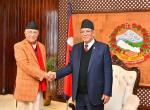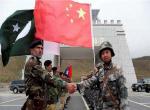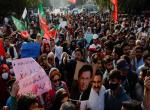Sri Lanka has recently submitted the Universal Periodic Report to the United Nations Human Rights Council (UNHRC) on the status of implementation of recommendations made by Lessons Learnt and Reconciliation Commission (LLRC). The Report cites drafting of a National Action Plan1 to implement the LRRC recommendations and setting up of a Task Force to oversee the implementation as per the Action Plan. The Action plan has rearranged the 285 LLRC recommendations under five themes: International Humanitarian Law issues, Human Rights, Land Return and Resettlement, Restitution/ Compensatory Relief and Reconciliation. The key question is how serious is the Government of Sri Lanka on reconciliation and especially in finding a long-term political settlement to the ethnic issue?
On reconciliation, to pre-empt United Nations’ move to appoint an experts panel on “war crimes” during the last stages of war, Sri Lankan President appointed a eight-member Commission on ‘Lessons Learnt and Reconciliation’ (LLRC) in May 2010. LLRC is a good step, but its mandate is very limited and ethnic reconciliation in the real sense has not been looked into seriously. As per the notification, the Commission was mandated to inquire and report on the facts and circumstances which led to the failure of the ceasefire agreement (CFA) operationalised on February 21 2002 and the sequence of events that followed thereafter up to 19 May 2009 when the war ended; whether any person, group or institutions directly or indirectly bear responsibility; lessons to learn from those events and their attendant concerns in order to ensure that there will be no recurrence; and methodology whereby restitution to any person affected by those events or their dependents or their heirs, can be effected.2 The assumption that the CFA was a failure is not true. Although, it is claimed that the LLRC is on the model of Truth and Reconciliation Commission of South Africa, there is no mechanism for reconciliation in the real sense. When the LLRC submitted its report in December 2011, things became clear. Although it was not 100 percent objective, it was not disappointing either.3 It tried to do a balancing act containing both positive and negative aspects. On positives it talked about the need for demilitarisation, investigation of disappearances, apart from acknowledging existence of ethnic grievances; surprisingly, it supported devolution of powers to minorities, although it did not spell them out. At the same time, it did not fix accountability for human rights abuses during Eelam War IV. On the collateral damage, the report reasoned that as a result of LTTE action and military reaction. Most importantly, the LLRC did not give any action plan on the way forward either on reconciliation or devolution. Yet, the major concern is that the need for fuller implementation of whatever the LLRC report has recommended. This was the main emphasis of the resolution passed in March 2012 at the UNHRC meeting in Geneva.4
Efforts in finding a long-term political settlement to the ethnic issue is nowhere in sight. Devolution of powers to the minorities seems to be the last priority. The Rajapaksa government has been talking of finding a “home grown solution” to the ethnic issue. In this regard, President Rajapaksa did appoint an ‘All Party Representative Committee’ (APRC) in 2006 to “fashion creative options that satisfy minimum expectations as well as provide a comprehensive approach to the resolution of the national question”. However, instead of exploring “creative options”, the APRC, in its interim report submitted in January 2008, advised the President to implement the 13th amendment to the Constitution, which outlined devolution to the provinces in the aftermath of the Indo-Sri Lankan Accord of 1987. Even after 20 years, ideas for seeking a solution were back to square one. At last, the APRC reportedly submitted its final report to the President in June 2010. The President, however, chose not to make it public as of now.5 It is more or less a dead piece of document, though the process is being continued through a Parliament Select Committee appointed to forge a consensus on the issue.
Tamil minorities called the PSC appointment as a “time-buying tactic”, but President Mahinda Rajapaksa, in an interview, observed that “We are keen on a sustainable political settlement. But it must have wide acceptance, especially in the context of the post-conflict situation.”6 When this pronouncement is taken seriously, writing on the wall is clear. At the maximum, what is on cards is some arrangement revolving around the existing 13th amendment. Through 13th Amendment, the island was divided into various provinces and granted some powers under Provincial List. However, the Provincial Councils lacked sufficient powers – especially land, police and finance – to run their affairs in an efficient manner. In addition, the Centre wields immense powers of overruling any of Provincial decisions. Instead of strengthening the Provinces, the present government is planning to dilute the present arrangement further. Unless there is genuine power sharing, the Provincial Council arrangement will be mere eyewash.
The Rajapaksa government also has to go beyond the constitutional tinkering in reaching out to minorities by showing magnanimity. Trust deficit that exists between various communities of the island must be bridged on a priority basis. Talks with TNA were a good move, but that did not take things any further. Any kind of sincere confidence building measure will go a long way in assuaging the Tamil diaspora that is presently keeping the hopes of Tamil Eelam alive. It is important for the Sri Lankan government to constructively engage the diaspora to make them positively contribute to the development of the country.
In the same vein, the Sri Lankan government must count-in the Opposition’s contribution in the nation-building. Without bi-partisan consensus, any political settlement to the ethnic question would be unsustainable. Political history of Sri Lanka since independence is witness to this. Colombo should also reconcile diplomatically with the West that is upset with former’s stand on human rights issues. Western and UN concerns are genuine and there is no “Church conspiracy” in this. It is vital to have them as ‘partners in development’ rather than overly depending on countries like China.
Endnotes
- The full text of the Action Plan is available at http://www.priu.gov.lk/news_update/Current_Affairs/ca201207/20120726national_plan_action.htm, accessed on 12 August 2012.
- For the text of the Warrant issued by President Mahinda Rajapaksa dated 15 May 2010, see http://www.priu.gov.lk/news_update/LLRC%20news/20100826warrent_issued.htm
- Full report of the LLRC is available at http://www.priu.gov.lk/news_update/Current_Affairs/ca201112/FINAL%20LLRC%20REPORT.pdf, accessed on 12 August 2012.
- UN Human Rights Council, ‘Resolution Promoting Reconciliation and Accountability in Sri Lanka,’ 19th Session, 22 March 2012, Full text of the Resolution is available at http://geneva.usmission.gov/2012/03/22/sri-lanka-resolution/, accessed on 13 August 2012.
- Leaked version of the final report is available at http://www.groundviews.org/wp-content/uploads/July-20-APRC-Final-Report.pdf, accessed on 13 August 2012.
- Interview with Sri Lankan President Mahinda Rajapaksa by R. Bhagwan Singh, Asian Age, 28 December 2011.
Published Date: 14th August 2012








Post new comment